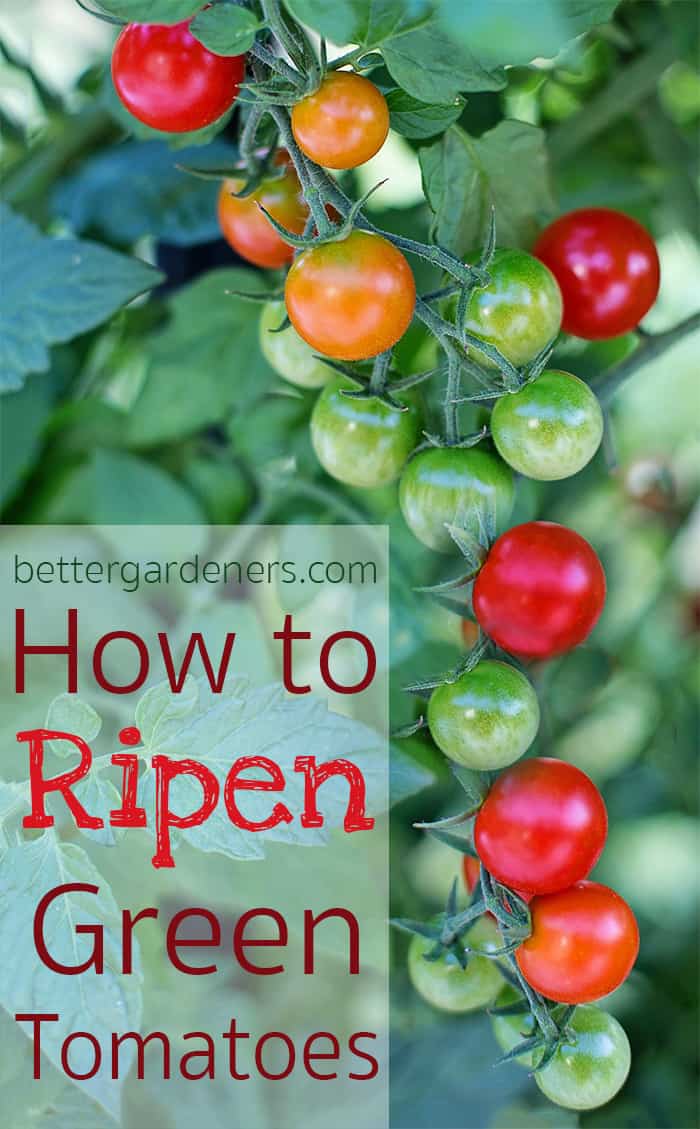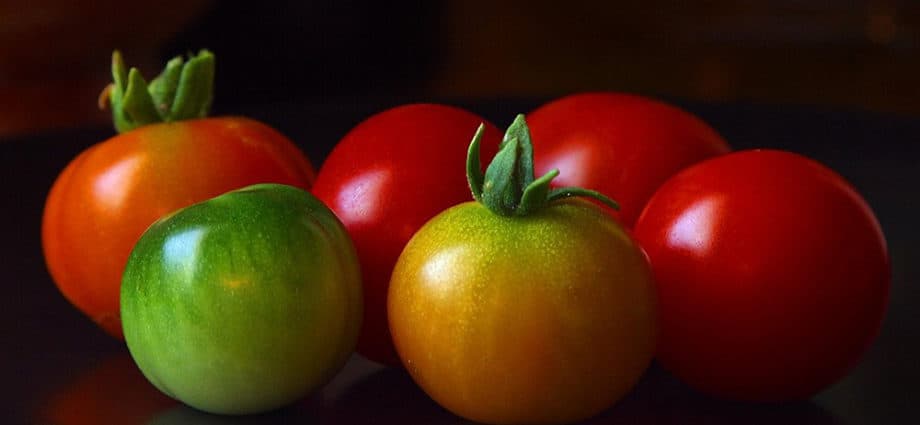There’s nothing better than picking a garden fresh ripe tomato off the vine and slicing it up to eat. That’s the main reason I always plant plenty of tomatoes in my garden each year. But, no matter how carefully I tend my garden, I always end up with green tomatoes. Usually, they’ve fallen off the plant after a big storm or they’re left at the end of the season when the first frost hits. While I love fried green tomatoes, sometimes you just want to enjoy a juicy ripe tomato. If you want to know how to ripen green tomatoes at home, we’ve got your cover. There are a few easy tips and tricks you can use to ripen those tomatoes right in your kitchen.
Contents
How Do Tomatoes Ripen?
Like many other fruits, tomatoes continue to ripen after they’re harvested. In fact, many commercial growers pick tomatoes while they’re green, ship them, and then ripen them using a gas called ethylene. As I’m sure you’ve experienced, these tomatoes do not taste as good as naturally vine-ripened tomatoes. While the process used commercially is a bit artificial, ethylene is actually released naturally by tomatoes and other fruits during the ripening process.
When tomatoes are still on the plant, they will ripen and turn either a traditional red or another beautiful color depending on the variety. Warm temperatures will help speed up the ripening process, though the fruit does not need sunlight to ripen (in fact, direct sunlight can raise the temperature of a tomato, halting ripening). Once the tomato reaches the mature stage of development, it will start producing ethylene which begins the ripening process and starts turning the fruit red (or orange or purple or…).
If it is very windy out or fall temperatures have arrived, you may notice fruit on the vine ripening much slower than it did during summer months. If frost is in the forecast, it may be a good idea to bring your tomatoes (or even the whole plant if it is potted) indoors to finish the ripening process.
How to Ripen Green Tomatoes at Home
Before you try out one of these tips, you should examine your tomatoes to determine at what stage of ripening they are. Assuming a traditional variety of tomatoes: bright red fruit is ripe and ready to eat. If it’s orange or yellow or you can see the beginning hints of color, the ripening process has started and the tomato itself will be able to finish it with a little help from you. If the tomato is completely green, then it has not started ripening yet and will need some outside help from a friend.

- If you have a mix of tomatoes at different stages of ripening, keep them together as they’ll produce their own ethylene.
- If you have only green tomatoes that haven’t started ripening, use a ripe tomato, banana, or apple to produce ethylene for them.
Once you’ve determined if your tomatoes need some help producing ethylene, try one of these techniques to ripen them up in your kitchen.
Place Them on Your Counter
If your tomatoes have already turned orange or are nearly ripe, just put them on your counter. You can put them in a bowl to help trap the gases, but just give them a couple days and they’ll soon be ripe and red.
Use a Paper Bag
This is the classic technique that most people use. Place your tomatoes in a paper bag (with a companion fruit if needed). Fold the bag shut and place it in a warm location.
The bag will trap ethylene which will speed up the ripening process. It will also help keep the tomatoes warm.
Use a Cardboard Box and Newspaper
This technique is best with tomatoes that have already started to ripen and works well when you have a large quantity. Put the tomatoes in a single layer in the bottom of a cardboard box. Place in a layer of newspaper and then more tomatoes. Continue until all the tomatoes are inside.
Keep the box in a dark and dry location and check frequently to remove rotting tomatoes and eat any ripe ones.
Bring the Plant Inside
If it’s the end of the growing season, you can actually pull your tomato plant out of the ground and hang it upside down to allow the tomatoes to ripen indoors. Shake the dirt off the roots, but keep the plant intact. A shed, garage, or basement is a good place to hang them. A warmer location means the tomatoes will ripen faster. Some gardeners use this technique to get fresh ripe tomatoes in October and November.

More Tomato Tips
Here are a few other tips that will help you with growing, ripening, and enjoying your tomato harvest.
Keep Tomatoes Warm, Not Hot!
We talked before about how cooler temperatures can slow or halt the ripening process. The same is true of hot temperatures, too. According to Cornell’s Vegetable Program, the best temperature for tomatoes is 70 to 75F. If you get a heat wave where temperatures are consistently above 85F, you may notice a slower ripening time–or the tomatoes might stop altogether.
Don’t Store Your Tomatoes in the Fridge!
When you have a surplus of ripe tomatoes during the height of the summer growing season, it can be tempting to refrigerate your bounty to make it last. Don’t do it! Cold temperatures convert sugar to starch, which destroys the tomato’s flavor. That’s one of the main reasons grocery store tomatoes don’t taste as good as homegrown varieties–they’re shipped in refrigerated trucks that kill the flavor.
Green Tomatoes are Edible
Yes, you can eat green tomatoes, even if you’re not growing a naturally green variety. All you have to do is cook or pickle them in some way. Fried green tomatoes are a big favorite in our house, and sometimes we will purposely harvest unripened tomatoes just to make them!
Save on Pinterest

